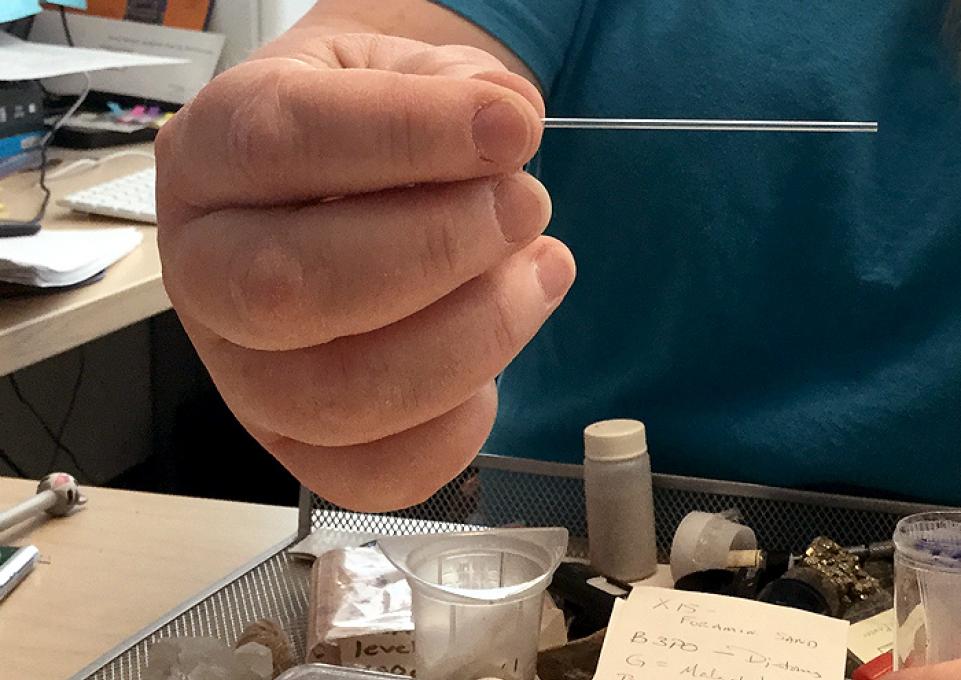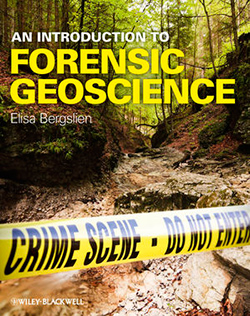
Elisa Bergslien, chair and associate professor of Earth Sciences and Science Education, was completing her doctorate when a murder occurred in a nearby community. The police asked one of the university’s scientists if any information could be gained by analyzing a sample of dirt found during the investigation. “Not really,” he answered. “It’s just dirt.”
When she heard the exchange, Bergslien was shocked—and motivated. “I knew we can take a tiny amount of dirt and identify what minerals and elemental materials are in it,” she said. “That’s when I began to think about how to use forensic geology to solve crimes.”
 In 2012, Bergslien’s book, An Introduction to Forensic Geoscience, was published. The text is in use not only in classrooms but also in police labs around the world to help law enforcement officers solve crimes ranging from fraud to genocide. She is also a member of the executive committee of the Initiative on Forensic Geology, an international organization whose purpose is to “develop forensic geology internationally and promote its applications.”
In 2012, Bergslien’s book, An Introduction to Forensic Geoscience, was published. The text is in use not only in classrooms but also in police labs around the world to help law enforcement officers solve crimes ranging from fraud to genocide. She is also a member of the executive committee of the Initiative on Forensic Geology, an international organization whose purpose is to “develop forensic geology internationally and promote its applications.”
Forensic geology uses the tools and materials of geology and earth sciences in court cases. “There are two main branches,” said Bergslien. “One searches for any evidence that might be buried, such as mass graves or caches of weapons. The other analyzes trace evidence to identify geologic materials, trying to determine if they could have come from the same source, and where that source was.” Bergslien focuses on the latter.
She explained that a bit of dirt taken from a suspect’s shoe can be related to dirt found at a crime scene, or can be excluded as having come from the same source. A sample of even a few particles can be analyzed to reveal elements such as lead and arsenic as well as tell-tale minerals. In Introduction to Forensic Geoscience, Bergslien recounts an 1872 hoax whose perpetrators claimed to discover a lode of gems including diamonds, rubies, sapphires, and emeralds. After investors sunk hundreds of thousands of dollars into the “mine,” geologists identified it as a fraud because such minerals are formed under different conditions and so would not be found together.
Bergslien is quick to point out that her work is rarely that exciting. “It’s often tedious,” she said. “Usually, it’s a matter of analyzing sample after sample to determine if they’re similar or different.”
Much of her work focuses on developing protocols to be used in forensic geology. She describes one such protocol in “Identification of cremains using X-ray diffraction spectroscopy and a comparison to trace element analysis” published in Forensic Science International. The article argues that X-ray diffraction spectroscopy is a superior method to determine if cremains are, in fact, human cremated remains and not a filler material such as cement or wood ash. “In a court of law,” said Bergslien, “the method of analysis must be repeatable and well-supported if the evidence is to stand.”
